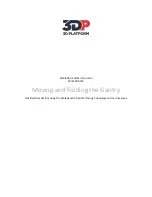
Programmer's Guide
PcOS Series 90PLUS
Printer Control Codes
Graphic Mode
12/16/99
Rev M
Page 53
5.9.4
Graphic Save
The Series 90PLUS Printer contains a graphic-save buffer. The buffer is 2014 bytes long and can be saved
in the printer’s nonvolatile memory. The nonvolatile memory is read at power up and is available with a
single command. The purpose of the graphic-save feature is to allow a graphic logo to be stored in the
printer.
The buffer is designed to save a graphic image. However, any print information can be saved and then
printed. The print information in the buffer can be replaced at any time and then printed. It does not need
to be saved in the nonvolatile memory. It is feasible to use the buffer to create a duplicate receipt.
An additional feature of graphic save is the ability to define a start-up macro. When the feature is
activated, the graphic-save buffer is processed by the printer as part of its initialization. This allows the
initial default state of the printer to be changed. The initial state can be reestablished by running the
graphic-save buffer. In graphic-save mode, the buffer does not contain any printable data.
5.9.4.1
Programming Considerations
The graphic-save feature works by inserting the save buffer into the printer data stream when the
print graphic-save command is encountered.
Some care should be taken when forming the buffer because any configuration commands (like font
or pitch changes) will remain in effect after the buffer is complete.
If the buffer is saved to nonvolatile memory, the saving process takes about seven seconds. The
printer must be idle for the save to happen. The nonvolatile memory has a limited number of write-
cycle operations. As a result, the number of saves should be limited. The buffer should not be saved
on a transaction by transaction basis. Once a day should be the maximum.
Station select commands cannot be placed in the graphic-save buffer. The buffer does not allow
errors. If a station select command fails, it will not be correctly processed. For this reason, the
graphic-save buffer will not allow station select commands to be kept. If a station select command is
included in the data stream, the buffer definition will be terminated, and the buffer will be deleted.
Illegal commands will also terminate and delete the graphic-save buffer during the definition process.
The buffer is 2000 bytes long. All commands
11
and print data are placed in the buffer, and both must
be included in the 2000-byte limit. The printer does not indicate when it is full. The application must
make sure that the buffer is not full. The printer will simply stop saving information in the buffer
after 2000 characters are received.
As the buffer is filled, the input data is printed normally. The effect of the graphic-save start
command is to begin saving the input data. The graphic-save stop command, discontinues saving data
and initializes internal pointers for the next print. The graphic-save stop-and-save command, halts
the save, writes the buffer to the nonvolatile memory, and initializes the internal pointers for the next
print. The graphic-save print command inserts the buffer into the print stream.
11
IPCL commands are converted by the printer into an equivalent [ESC] code and then placed in the save buffer.
The equivalent [ESC] code should be used to calculate the size of the save-buffer data.
Summary of Contents for PcOS series 90plus
Page 1: ...P OS c SERIES 90PLUS Receipt Validation Journal Printers PROGRAMMER S GUIDE Rev M PN 100 7586 ...
Page 2: ......
Page 6: ...PcOS Series 90PLUS Programmer s Guide Page iv Rev M 12 16 99 ...
Page 139: ...Programmer s Guide PcOS Series 90PLUS Product Self Tests 12 16 99 Rev M Page 127 73 Italian ...
Page 179: ......
Page 180: ...INSERT PN 100 7307 Rev M 12 16 99 ...
















































